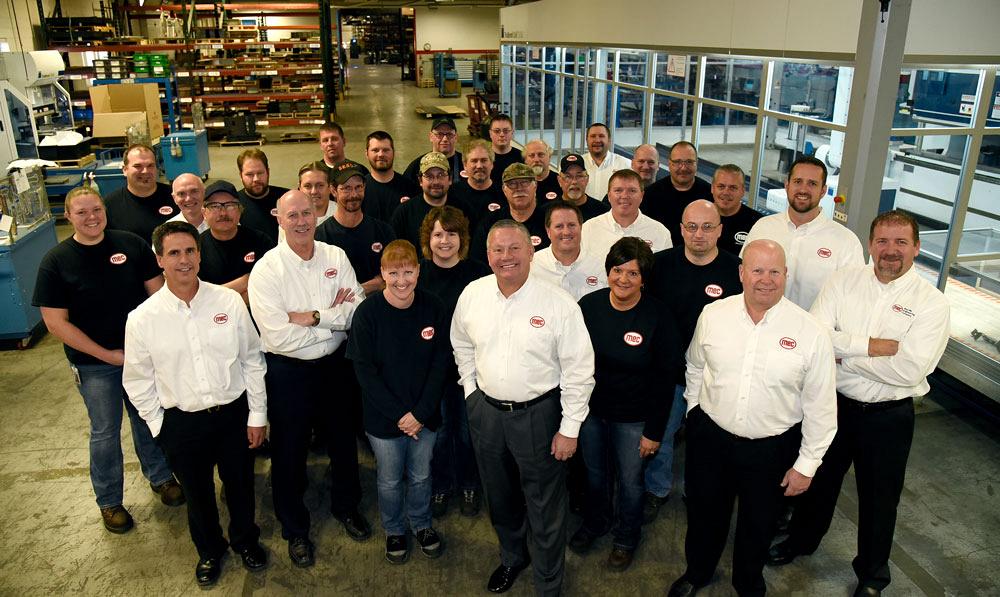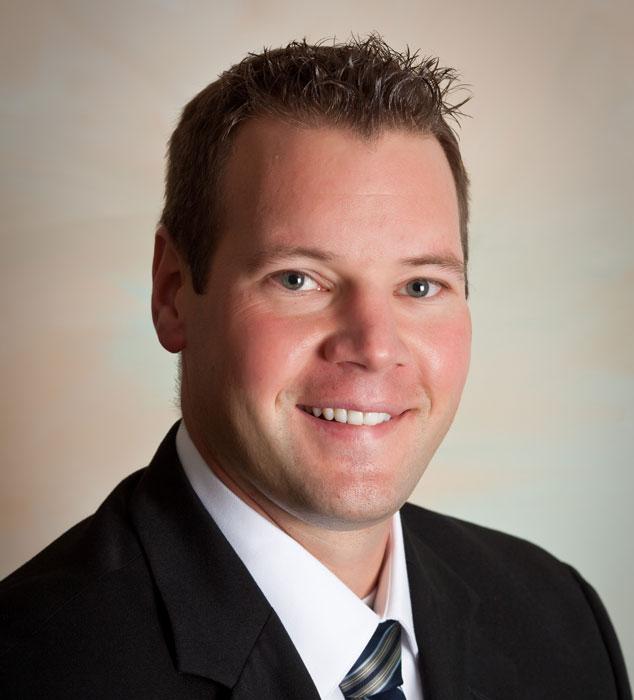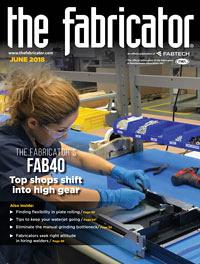Senior Editor
- FMA
- The Fabricator
- FABTECH
- Canadian Metalworking
Categories
- Additive Manufacturing
- Aluminum Welding
- Arc Welding
- Assembly and Joining
- Automation and Robotics
- Bending and Forming
- Consumables
- Cutting and Weld Prep
- Electric Vehicles
- En Español
- Finishing
- Hydroforming
- Laser Cutting
- Laser Welding
- Machining
- Manufacturing Software
- Materials Handling
- Metals/Materials
- Oxyfuel Cutting
- Plasma Cutting
- Power Tools
- Punching and Other Holemaking
- Roll Forming
- Safety
- Sawing
- Shearing
- Shop Management
- Testing and Measuring
- Tube and Pipe Fabrication
- Tube and Pipe Production
- Waterjet Cutting
Industry Directory
Webcasts
Podcasts
FAB 40
Advertise
Subscribe
Account Login
Search
One of the largest metal fabricators set to break sales records
MEC’s goal is to reach $500 million in sales by 2020. Will it get there?
- By Tim Heston
- June 8, 2018
- Article
- Shop Management

Bob Kamphuis, front and center, stands with his team adjacent to the company’s robotic bending cell in one of MEC’s Mayville, Wis., plants.
“We’re expecting to end the year with record revenue.”
That was Bob Kamphuis, chairman, president, and CEO of MEC, a behemoth in the metal fabrication world. The Mayville, Wis.-based company has been the largest fabricator on the FAB 40 for many years. A bellwether company if ever there was one, MEC ended 2017 with $314 million in revenue and is projecting to end 2018 at $346 million, maybe higher.
MEC, which happens to have one of the country’s largest employee stock ownership plans, or ESOPs, has 16 plants across the Midwest, Middle Atlantic, and Southeast. Altogether, the fabricator has 2.1 million square feet of manufacturing space and 2,100 employees.
The nature of MEC’s organization reflects how many fabricators nationwide grow. The company doesn’t have a handful of plants with thousands of employees in each, but instead many locations with a few hundred employees. Some locations are larger than others, particularly the Mayville South plant in Mayville, Wis., but none is truly massive. Visit the plant in Greenville, Miss., or the tube fabrication facility in Neillsville, Wis., and you wouldn’t guess that the place is run by an organization that expects to have a half-billion dollars (that’s billion with a “b”) in annual revenue by 2020.
Kamphuis stated that $500 million goal at The FABRICATOR’s Leadership Summit in San Diego in early 2016. MEC acquired Center Manufacturing, a large Michigan-based contract fabricator for the transportation business, at the end of 2012, and revenue seemed to be on an upward trajectory. Then with the slowdown in mining, construction, commercial vehicles, and agriculture, MEC’s revenue dipped to “only” $288 million in 2016. The next year revenue numbers bounced back significantly.
So does that $500 million sales projection for 2020 still stand? And what does MEC consider the industry’s greatest assets and challenges going forward? The FABRICATOR spoke with Kamphuis as well as Ryan Raber, vice president of sales and marketing and executive director, tanks, to find out.
The FABRICATOR: Describe the story behind MEC’s revenue trends over the past few years and what the future holds.
Bob Kamphuis: We were swimming against the current for several years. But even while some of our markets—like mining, agriculture, construction, and defense—were declining, we continued to pick up market share. Today, across our businesses, a lot of growth is coming from a ramp-up of volumes for existing work.
In fact, we’re seeing strong markets almost everywhere now, from construction to commercial vehicles to turf care to recreation. We’re even seeing agricultural equipment starting to improve.
The FABRICATOR: Are customers in the agriculture market concerned about the trade situation, considering the importance of exports in that arena?
Kamphuis: We don’t see anyone getting too nervous just yet. We’re seeing those at the consumer level showing concern, but we continue to listen to direction from our customers. We’re hearing about lower grain inventories, which should improve grain prices [and prove] promising for the ag market. Plus, farmers buy equipment to be more productive, just like people running factories do.
The FABRICATOR: How about on the material supply side, considering raw material pricing trends? Are you able to pass those price increases on to customers?
Kamphuis: We carefully monitor how those pricing adjustments get handled. Almost all our contracts have price-adjustment mechanisms that trigger as raw material prices rise or fall. We all believed that metal prices were going to rise this year. We were expecting it prior to the [steel and aluminum] tariff announcement; the tariff simply adds another dimension to it.
The FABRICATOR: In the face of all these challenges, is MEC still on track to reach $500 million in sales by 2020?
Kamphuis: That timeline still stands. We’ve just changed how we expect the growth to take place. Finding people [to hire] has become our greatest constraint. A few years ago we didn’t see people as being our primary constraint to growth. The constraint was there, of course, but it wasn’t so severe. So now, even though we will continue to grow internally, acquisition will play a larger role in meeting our growth objectives.
The FABRICATOR: When it comes to potential acquisitions, what kind of company would complement MEC?
Kamphuis: The 2012 acquisition of Center Manufacturing was a huge move for us. With Center’s presence in the transportation market and off-road recreational markets alongside their complementary tube offerings, the acquisition diversified our customer base significantly.
Moving forward, we continue to look for another meaningful, transformational acquisition. It could expand our geographic presence or diversify our customer base where we could apply some of our existing products and processes to markets we’re not serving presently. I think that would be ideal.
The FABRICATOR: When it comes to organic growth, if finding people remains the constraint, what’s your strategy moving forward?
Ryan Raber: First, we give our current employees the tools they need to add more value and produce more. We have already automated the front end of the process, starting with sales, order generation, request for quotation, all the way through to the purchase order. And then on the back end, we’ve streamlined how we handle receivables and financial transactions with our customers.
This leaves the shop floor. We’re always investing in more automation, of course, from laser cutting to robotic welding and now robotic bending. We look not just at the machine or robot, but also the fixturing. In robotic welding, for instance, we look at the clamping; simple air clamping can help an operator fixture and remove parts much faster.
We’re still a contract manufacturer, and we need people to get the job done. Automation is part of the answer, and so is process improvement, but they aren’t the entire answer.
To that end, we analyzed the labor market. We took a deep dive into some technical training programs and gained a better understanding of recruiting practices. We need to make sure potential and current employees—and with us being an ESOP, they’re also shareholders—really understand the job requirements. Over the past year we’ve created some additional processes, including specific processes we’ve developed in human resources.
The FABRICATOR: What exactly are those HR processes?
Raber: I can’t divulge those, unfortunately. We feel we’ve built up some inherent competitive advantages. I’ll just say we’ve built up some intelligence in our HR processes, and we’ve been able to set ourselves apart.
The FABRICATOR: Many smaller fabricators tell prospective employees that, because they’ll be joining a small company, they won’t be just a number. Since MEC has grown so large, has the “being just a number” perception presented any challenges when hiring?
Kamphuis: Not really. In some sense, with all of our locations, MEC is made up of a number of small businesses. We have a small paint business, a small tube bending shop, and so on, and they all have the advantages and resources that come with being part of a larger organization. Even though we have 2,100 employees, remember that we have 16 locations. That number doesn’t get too out of hand when you look at it plant by plant.
Beyond that, the more time you spend training people, the better employees you’ll have, and people like to learn. They want to be a part of a success story. With this approach, you’re going to retain people, and they’re going to become better over time. That builds loyalty, because the company is giving them the tools and resources they need to succeed. It’s a trade of sorts. Everybody wins and once you get the process going and keep on moving the momentum in the right direction, it feeds on itself and is a powerful differentiator. This works in organizations of any size.
In our case, we also have the benefit of being an ESOP [which gives employees stock and a stake in the company’s future]. But I think we’re on the right track, and we’d be on the right track with or without the ESOP.
The FABRICATOR: If someone got a job in one of MEC’s Michigan locations, then transferred to the tube fabrication facility in Wisconsin, then on to your powder coating facility, what would be the same, and what would be different?
Raber: The easiest way to say it would be this: You’d see that the values are the same, but the applications are customer-dependent. That is, how do we adapt to make customers successful? The same culture is applied to a different process.
Teamwork and trust are the foundation of our mission. You’d hear the same thing at every plant. The values are consistent and true whether you work in laser cutting, bending, tube bending, or painting. The mission just gets applied in a different way, but everyone thinks about the business in the same manner.
The FABRICATOR: Moving ahead to 2019 and 2020, what will be MEC’s greatest challenges?
Kamphuis: Our challenges will be about having the right capacity and enough capacity. We manage that capacity by working with customer forecasts and understanding capacity constraints before they happen. We’ve streamlined our PPAP [production parts approval process], so we can process parts on different machines and at different plants, if needed, all based on specific customer requirements. Process planning throughout our locations improves our flexibility.
Still, like any fabricator, we need people to make it happen. We can buy equipment, tools, and buildings to increase capacity. But finding the right people will be the center of it all.
Photos courtesy of MEC Inc., www.mecinc.com.
About the Author

Tim Heston
2135 Point Blvd
Elgin, IL 60123
815-381-1314
Tim Heston, The Fabricator's senior editor, has covered the metal fabrication industry since 1998, starting his career at the American Welding Society's Welding Journal. Since then he has covered the full range of metal fabrication processes, from stamping, bending, and cutting to grinding and polishing. He joined The Fabricator's staff in October 2007.
subscribe now

The Fabricator is North America's leading magazine for the metal forming and fabricating industry. The magazine delivers the news, technical articles, and case histories that enable fabricators to do their jobs more efficiently. The Fabricator has served the industry since 1970.
start your free subscription- Stay connected from anywhere

Easily access valuable industry resources now with full access to the digital edition of The Fabricator.

Easily access valuable industry resources now with full access to the digital edition of The Welder.

Easily access valuable industry resources now with full access to the digital edition of The Tube and Pipe Journal.
- Podcasting
- Podcast:
- The Fabricator Podcast
- Published:
- 04/16/2024
- Running Time:
- 63:29
In this episode of The Fabricator Podcast, Caleb Chamberlain, co-founder and CEO of OSH Cut, discusses his company’s...
- Industry Events
16th Annual Safety Conference
- April 30 - May 1, 2024
- Elgin,
Pipe and Tube Conference
- May 21 - 22, 2024
- Omaha, NE
World-Class Roll Forming Workshop
- June 5 - 6, 2024
- Louisville, KY
Advanced Laser Application Workshop
- June 25 - 27, 2024
- Novi, MI

































